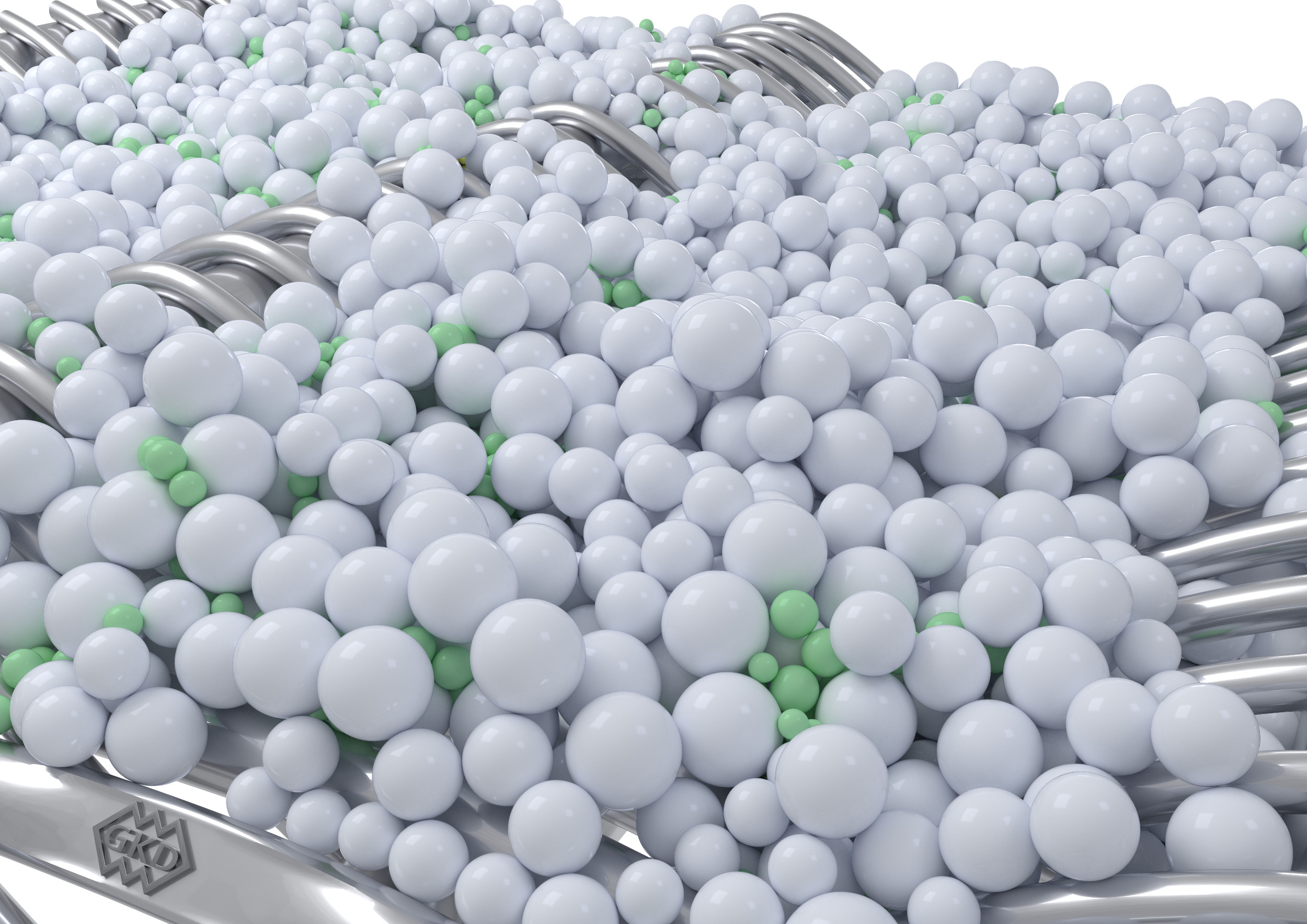
GKD, a specialist in mesh filter and process belt technology, will focuse on four key topics at FILTECH in Cologne this March.
Numerical simulation of the bubble point
For cylindrical pores, the pore diameter is calculated on the basis of the pressure value that was determined with the standard bubble point test in accordance with BS 3321 and ISO 2942. As mesh pores are not cylindrical, time-consuming lab tests have been required to determine a capillary pressure constant for calculating the pore diameter. GKD has succeeded in determining these capillary pressure constants with numerical tools using a multiphase simulation model. For each mesh, the company uses the simulation and the bubble point pressure measured to determine the largest pore with great speed and precision. At FILTECH, GKD presents newly discovered dependencies. Starting with the bubble point value and taking the capillary pressure constant that was calculated individually for each mesh, the company can use these dependencies to derive the mesh aperture. This makes it possible to check the geometric pore aperture or correct pore aperture distribution quickly and accurately during the production process.
Porometric mesh
Another result of the virtual development procedure at GKD is the Porometric mesh family. The three-dimensional weave meets key requirements of industrial filter processes. With constant volumetric flow, it reduces local pore velocity by up to 40%. The significantly lower abrasion that this entails means considerable efficiency improvements in oil and gas exploration. The three-dimensional slit structure with rectangular pores enables high porosity – with the same separation rate, permeability is three times greater than that of conventional meshes. At FILTECH, GKD presents Porometric 25 µm for water filtration and a highly permeable seawater-resistant mesh with a pore aperture of 24 µm – 10 µm finer than other filtration meshes for ballast and sea water filtration.
ODW6 for high throughput with extreme separation rates
As a surface filter with high separation rates and permeability, the single-layer mesh structure of the ODW6 made from stainless steel reliably separates particles > 6 µm. Significantly more stainless steel wires across the surface area than conventional meshes lend it mechanical strength and high pore stability. This robustness of material and structure qualifies it for the high throughput that is typical in water management. Slot-shaped pores on the mesh surface and larger pores inside the fabric ensure secure particle retention, strong dirt-holding capacity, and minimal tendency to block. Long service life and greater process efficiency are clear evidence of this. Thanks to simple cleaning through backwashing, the ODW6 mesh is also easy to maintain. As a higher-performance replacement for the synthetic filters that have been used commercially in water management to date, this innovative mesh type can be used in all common disc filtration systems.
ODW6 mesh is suitable for use in the fight against microplastics finding their way into urban waters. When used in sewage plants, filters fitted with ODW6 successfully retain microplastic particles > 6 µm with no reduction in flow rate. At the required flow rates, previous filter media only permitted particle retention > 20 µm.
Optimized cleaning in filtration processes
In cartridge and disc filters in industrial solid/liquid separation, the cake discharge with particles < 10 µm is a key factor in system and process efficiency. In suspensions with low solids content, the interaction between release and cohesion of the filter cake at an optimum backwashing rate is a major challenge. The Karlsruhe Institute of Technology KIT therefore examined the release properties of thin particle layers with different filter media from a variety of manufacturers. As a result of the pressure pulse, a thin filtrate film removes the first particle layer so that the filter cake slides off. The better the filter medium regenerates, the greater the improvement in process performance. At the same time, a reduction in the required backwashing volume improves the filtrate and system efficiency. In the comparison of the different filter media with 25 µm separation rate, the stainless steel optimized dutch weaves from GKD enable a considerably lower backwashing volume than the polymer filters they were tested against. The best release properties and backwashing volumes of the metal and synthetic meshes tested were achieved by the newly developed Porometric mesh. Both mesh structures, optimized dutch weaves and Porometric, are mechanically robust, can be continuously regenerated, and do not become blocked, meaning that they provide longer service lives and greater efficiency than conventional synthetic meshes. At the same time, the lower pump performance required reduces energy consumption and increases the durability of the components.





